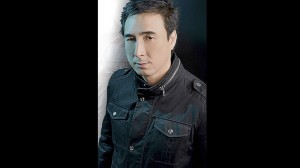The music of the past four decades never really left us. More often than not, we hear songs from the 1960s, ’70s, ’80s and ’90s — on radio, in club gigs and big concerts.
Lately, it’s the ’80s that have been generating a lot of attention. We remember the sold-out concert of the British duo Tears For Fears in May 2010 at the Big Dome; the reunion gig of the Pinoy group Identity Crisis in September this year at the NBC Tent; a show featuring The Human League, Howard Jones and Belinda Carlisle in October also this year at the Big Dome; the opening of a club called Cafe ’80s in Ortigas Center and in Quezon City; and, of course, the long-running and award-winning radio show on RX 93 FM, “Back to the ’80s.”
As a loving tribute to the period, a concert titled “80289” (’80 to ’89) will be held for four nights on Nov. 11, 12, 18 and 19 at the Music Museum. It features Lou Bonnevie, Chad Borja, Gino Padilla, Jamie Rivera, Ella Mae Saison and Juan Miguel Salvador performing songs from an era that saw the explosion of punk and New Wave music and fashion, and the release of the biggest selling album of all time, Michael Jackson’s “Thriller.”
Inquirer asked Salvador, Padilla and Borja to recall what the ’80s meant to them:
What particular ’80s moment did you think change your life, and why?
Juan Miguel Salvador (JS): My being part of the Rage Band. As a founding member, singer and keyboardist, I did not just get to live through it, but actually got to be part of the music scene. There wouldn’t have been a better way to experience the culture of that decade but through music.
Gino Padilla (GP): When I had a duet with the great rock and roll legend, Ms Tina Turner, in a 1986 Pepsi commercial that was shot in Hollywood! It was the start of my professional singing career.
Chad Borja (CB): I was with different bands during the ’80s and got to travel a lot. I experienced different cultures and food specialties such as grilled stingray in Newton Circus, Singapore, bakuhte in Indonesia, tom yam gong in Thailand, nasi lemak and nasi goreng in Indonesia, among others. That was the time I learned so much about music and performing.
What was different about the ’80s, compared to previous decades?
JS: Electronic gadgets and music software, though some of these were invented a decade earlier. Among them were remote keyboards, electronic synthesizers, guitar synths, electronic drumpads, analog and digital effects processors. The use of these gadgets defined the sound of the ’80s.
GP: Music had synthesized sounds and electronic beats. There was colorful fashion with shoulder pads and hair spray.
CB: The ’80s were full of color which defines happiness. Everything was vibrant including the clothes, hairstyles and accessories. The musical arrangements featured machines like synthesizers and Simmons drums. It was also the birth of Yamaha DX7 electronic keyboards.
What did you like most about the ’80s?
JS: Individualism. It was a chance for everyone to make a statement, not just in politics but in fashion as well. You could practically grab anything from safety pins, chains, buttons, beads, paper clips, etc. and use them as fashion statements. Your hair could be teased, cropped, curled, bleached, or dyed any color. Experimentation was the norm and the same could be said about the music of that decade.
GP: A carefree attitude, Walkmans and karaokes.
CB: The improvement of technology for musical instruments. The sound of the harmonica, saxophone, electric guitar, percussion and others were incorporated into the Yamaha DX7.
And what did you hate about it?
JS: People Power. Although I was part of it, after 25 years I have come to realize that it did not change anything. Corruption is still rampant. There are even more politically motivated killings, massive cheating during elections, more slum areas and hungry people while we have politicians and military officers living cozily in exclusive villages and expensive condominiums. Nothing has changed since.
GP: Phone technology was still being developed. Computers, too, were not that advanced yet.
CB: There was nothing to hate, as far as the music was concerned.
Who’s the greatest ’80s music artist, and why?
JS: The King of Pop, Michael Jackson. Though he was not particularly my favorite, no one, not even Madonna, could match MJ. He changed people’s attitude towards world hunger and the role that children play in shaping the future. It wasn’t just his music, but the purpose behind his being a musician that mattered.
GP: Michael Jackson. He was an amazing artist, incredible dancer, and his music had worldwide appeal. His compassionate heart was also reflected in his songs.
CB: For me it’s Prince because he was truly a different and unique artist.
What’s the greatest ’80s song?
JS: “We Are the World.” It made us look beyond ourselves, step out of our comfort zones and make a difference by pulling together to help the starving people of Ethiopia. That song awakened humanity’s generous spirit.
GP: “We Are the World”—where all the great singers of that decade were united in one song.
CB: Some of my favorites are “That’s What Friends Are For,” “Rhythm of the Night” and the songs of David Foster.
What did the ’80s mean to you personally?
JS: Everything. All that I am now as an artist and performer is the result of the experiences I went through in the ’80s.
GP: It was a time for discovering and developing my talent.
CB: That was when I realized that I was destined to be a performer, and that singing would be my bread and butter. It was really my passion. From then on, I knew that I would keep singing forever.
